Of the 11 children in the Sherman family, red-haired Cump was the studious one. He read books and studied mathematics and Latin, while his younger brother John got into fistfights.

No one could have imagined that Cump would grow up to become famous as a fighter and a soldier. Yet, although William Tecumseh “Cump” Sherman is best remembered for his military role in the Civil War (1861– 1865), he was a thinker, too. He fought for the country because he cared deeply about the promise of the American nation.
Cump was born on February 8, 1820. His father, a well-known lawyer and judge on the Ohio frontier, died nine years later. His mother could not take care of her children alone, so Cump went to live with family friends. His foster father, Thomas Ewing Sr., was a prominent politician. He introduced Cump to congressmen, senators, cabinet officials, and even presidents. He also pulled some strings and got his teenaged foster son an appointment to the U.S. Military Academy at West Point in New York. Cump hoped to become an officer in the U.S. Army.
As a child, Cump had watched his father and his foster father manage the country’s affairs through law and politics. As a cadet at West Point, he learned how to serve the country through military service. He was an excellent student. He didn’t care much about how neatly he dressed or how well he behaved, however. In a school based on obeying rules, that approach got him into trouble. Yet, he managed to graduate close to the top of his class in 1840.
Sherman was assigned to fight in the Second Seminole War. It was a long, bloody effort to force Native Americans out of Florida. When it ended in 1842, he stayed in the South. He was stationed in Georgia and South Carolina. His connection to his famous foster father made him welcome in the homes of the nation’s wealthiest families.
Esta historia es de la edición January 2018 de Cobblestone American History Magazine for Kids.
Comience su prueba gratuita de Magzter GOLD de 7 días para acceder a miles de historias premium seleccionadas y a más de 9,000 revistas y periódicos.
Ya eres suscriptor ? Conectar
Esta historia es de la edición January 2018 de Cobblestone American History Magazine for Kids.
Comience su prueba gratuita de Magzter GOLD de 7 días para acceder a miles de historias premium seleccionadas y a más de 9,000 revistas y periódicos.
Ya eres suscriptor? Conectar
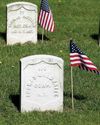
Putting the Pieces Together
Americans needed to begin to put the past behind them, come together, and plan for the future in the spring of 1865. But Abraham Lincoln, the man best equipped to lead them and who had hoped to restore the country as smoothly and peacefully as possible, had been assassinated.
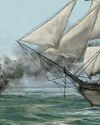
LAST SHOTS
The last Confederate forces in the Civil War didn’t surrender in the spring of 1865 or on a battlefield.
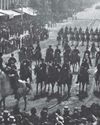
AND IN OTHER 1865 NEWS
A group of African Americans stop at the White House’s annual public reception on January 1, where they shake hands with President Abraham Lincoln.
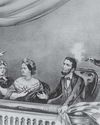
A Plot to Kill President the
For several months, actor John Wilkes Booth’s band of conspirators had plotted to capture President Abraham Lincoln and hold him hostage in exchange for Confederate prisoners.
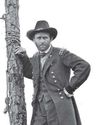
Let the Thing Be Pressed
In June 1864, Union Lieutenant General Ulysses S. Grant began a nearly 10-month campaign in Virginia.
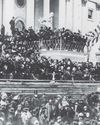
HEALING THE NATION
President Abraham Lincoln took the oath of office for the second time on March 4, 1865.

A Helping Hand
The spring season is hard in any agricultural society. Plants and animals are too small to eat.
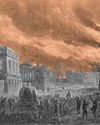
WAR SHERMAN-STYLE
As far as Union Major General William T. Sherman was concerned, the Civil War had gone on long enough.
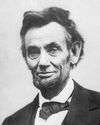
PEACE TALKS
The fall of Fort Fisher made clear that the Confederacy’s days were numbered. Southerners were tired and hungry.
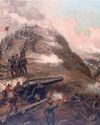
FORT FISHER'S FALL
Outnumbered Confederate soldiers inside Fort Fisher were unable to withstand the approach of Union troops by land and the constant Union naval bombardment from the sea.